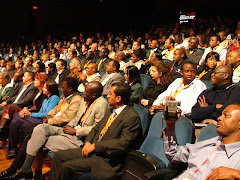
This was during the first day of the Eid celebrations in Dar es Salaam when Moslem believers flocked at the Magomeni mosque near traffic lights. It was sunny that morning as the presence of the believers who almost formed a road block an aspect that caused traffic jam along Kawawa road.

Many people do attend churches or mosques during religious celebrations. It’s quite a usual thing to see a large crowd of the people gathering in the field as though are watching a game like spectators. But these are Moslem believers who had gathered in the field for prayers during Eid-El-Fitry celebrations. The scene was taken at Sinza near a primary school. During these celebrations which are characterized by the emergence of many people, believers normally finds no space inside a mosque and instead resort to conduct their prayers outside in an open space like this.

As the saying goes, there is no celebrations which does not have demerits of its own. This was affirmed recently during Eid El-Fitry celebrations here in Dar es Salaam when a young man of about 18 years found himself in troubles after having taken a local illicit brew commonly known as “Gongo” and began making fan of himself. Without knowing what he was actually doing for being under the influence of alcohol, this young boy went straight and urinated near the market place whereupon because of his irresponsible behaviors hawkers at the market began giving him blows and put him in a roadside. In the photo you can see him unable to stand in presence of the people who had gathered around to view this drama

























